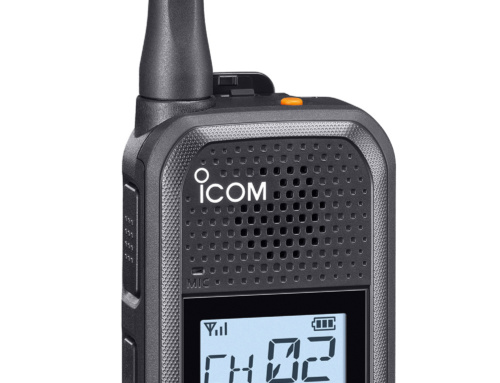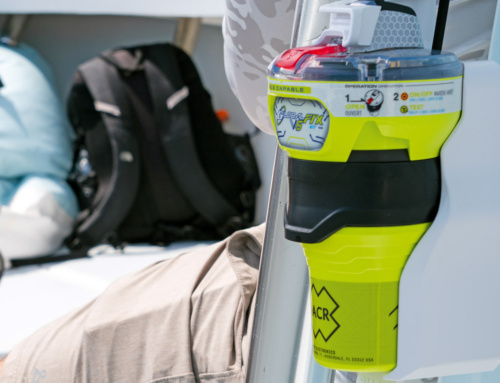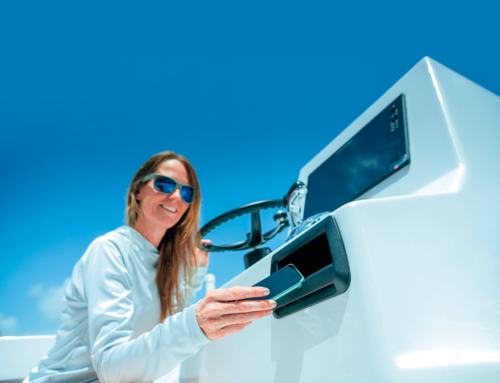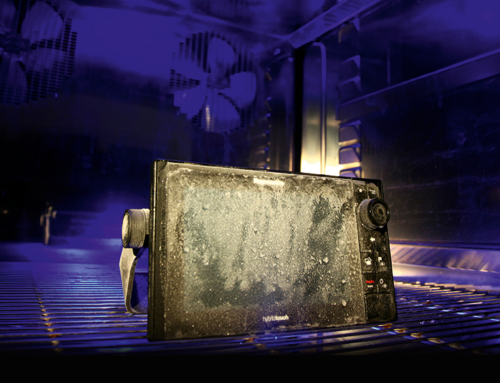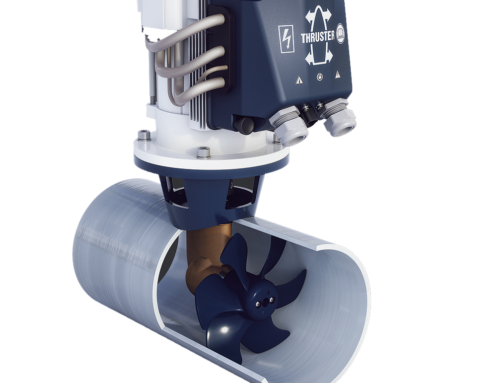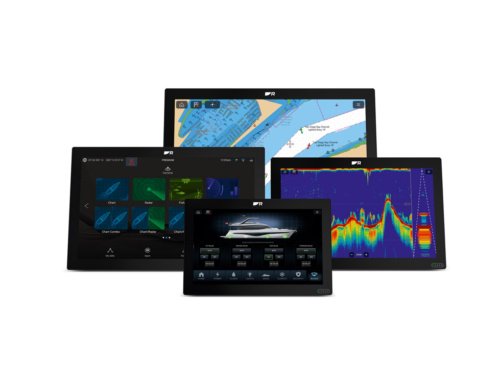Dave Marsh explores the on-board entertainment options available to music lovers with budgets both large and small …
For those of us who take our on-board musical entertainment seriously, life just keeps getting better and better. Much of this is being driven by the rapid shift from the physical world of CD to the digital world of downloads and streaming. If anything, this swing is even more beneficial to the peripatetic boating audiophile than it is to the house-owning Hi-Fi nut, who at least has the space for a big CD collection, and doesn’t normally have to worry about corrosive salty air or a big wave swamping their music system.
I reckon the issue of quality has become far more important too. Time was when we might have grudgingly accepted the trade-off between audio quality and convenience on our boats. When MP3 was the dominant source, we didn’t have much choice. Now, though, streaming has gone upmarket, and it’s easy to stream lossless CD-quality audio from the likes of Tidal at CDs’ full-fat 1411kbps (16 bit/44.1kHz) bitrate. So no longer is the portable source the limiting factor, the audio equipment is. Audio quality can be deceptive – you invariably don’t realise how much you’re missing until you hear something better. So if heavily compressed DAB radio or Spotify’s 160kbps streaming rate (their others are 96kbps and 320kbps) are the only music sources you’ve ever listened to, it probably sounds fine. Take my word, though, on anything other than budget in-ear headphones you would be amazed at the difference that full-fat sound provides.
Interestingly, Princess are working towards being able to offer Hi-Fi equipment from Naim – a top name in domestic audio – on all their boats. So production boatbuilders finally seem to be waking up to the fact that their on-board Hi-Fi needs to keep up with the quality of our domestic Hi-Fi. Of course, there are zillions of boats much smaller than the average Princess whose owners would still like to listen to good Hi-Fi, and they often want to, or have to, fit their speakers and their head units outside, where they’re exposed to the elements. Here, companies like Fusion, JL Audio, Clarion and Sony fight it out with their ranges of waterproof or water-resistant equipment.
Apollo – Greek god of music
Fusion have long offered an extensive line of waterproof head units and speakers, but at the end of April, Chris Baird, managing director of the New Zealand-based company, invited us to Majorca to test-drive their new top-of-the-range Apollo series, appropriately named after you know who.
Before we dive into the realms of Apollo’s digital world to explain the remarkable functionality of Fusion’s new 770 and 400, a word about its musical quality. Fusion’s number one competitor, American company JL Audio, only really became a true rival in 2016 when they launched their first head unit, the romantically named MM100s-BE MediaMaster. Until then, their reputation had rested on their terrific waterproof speakers and external amplifiers. Just before the MM100s-BE launched, I’d conducted some listening tests on Fusion and JL’s equipment – unfortunately not fully back to back, but sufficiently close together to reach an unequivocal conclusion: that Fusion’s connectivity and versatility were in a league of their own, but JL’s sound quality was clearly superior (at least it was when paired with the particular Clarion CD player that was powering their waterproof speakers).
So when it came to sound quality, back then the one-man jury was unanimous. But not now. Or at least, the jury will remain out until we get to hear JL’s new MediaMaster. The dramatic jump in sound quality that I am convinced I could hear since the last Fusion test is almost certainly down to two things. Firstly, the company has developed a new range of speakers and subwoofers, the Signature series. Fusion have taken an interesting approach to their new Signature speaker design. Boats present an almost impossible challenge for audio engineers: they often have bizarrely shaped cabins and deck spaces, surfaces vary wildly between super-soft and diamond-hard, and perhaps worst of all, speakers are jammed in where they fit most conveniently, often overhead, and never in the optimum acoustic position (which would typically be around one-fifth of the room’s dimensions in from the sides and from the ‘back wall’). With that in mind, Fusion have optimised their speakers to produce a broad spread of excellent off-axis sound, rather than a mind-blowing sound that can only be heard from a singular sweet spot, which in most boats is no more than a whimsical notion.
Fusion have also incorporated DSP (digital signal processing) into their 770 and 400. One key aspect of Fusion’s DSP is that the owner or the boatbuilder can fine-tune the system’s set-up by telling it exactly which speakers, subwoofers and amplifiers are connected to the control unit, and also whether the speakers are inside or outside. The system then modulates the audio signal to suit, to provide what it believes is the best sound signal for the particular installation – and in a particular zone (cabin or outside area) too, not just in a global sense. Of course, we all hear sounds differently, especially as we get older, so there’s nothing to stop owners experimenting endlessly with the set-up to further tailor the sound.
We listened to a number of different systems, but the best was on board a Sea Ray SDX 270 (a small bow rider) powered by the Apollo 770, which in terms of speakers, amplifiers and subwoofers was close to the top end, but not the very best or the most powerful system that the company makes. We downloaded a number of test tracks that I’m intimately familiar with, among them Leonard Cohen’s ‘I’m Your Man’ from his Tower of Song album and Mahavishnu Orchestra’s ‘One World’ from their seminal Birds of Fire album. The first has one of the most soulful and deeply resonant male vocals ever sung, the second has one of the greatest drum solos of all time (Billy Cobham), a terrific bass line, plus Moog and guitar playing from Jan Hammer and John McLaughlin that beggars belief. More importantly, these two tracks between them put wildly differing demands on a music system.
Whatever we played, it sounded terrific, even faced with the challenge of an outside installation on a small boat. Crucially, the system did not seem to overemphasise any particular aspect as some do – subtle mid range often suffers at the hands of flabby thumping bass, for instance. Most importantly of all, it sounded, well, musical. Ultimately, that balance and musicality meant that I stopped scrutinising the sound quality and just ended up listening to the music – which is precisely what a good music system is supposed to achieve.
The digital domain
Fusion have leveraged the digital world to produce a system with impressive functionality and connectivity. Nowadays it’s not unusual to find RCA audio inputs, 3.5mm jack plugs, plus Android and i-thingy connections – or at least some combination of this foursome – on modestly priced marinised Hi-Fi units from the likes of Sony, Clarion, JBL and Poly-Planar. Connectivity on Fusion and JL Audio’s equipment is much better, with the Apollo units and the MediaMaster both sporting NMEA 2000, USB and Bluetooth connections. However, Fusion have gone one better and integrated Wi-Fi into their Apollo units.
Wi-Fi is currently better than Bluetooth because Bluetooth can have trouble streaming high-quality audio like Tidal due to the extremely high data transfer rates. Of course, it’s easy to add Wi-Fi and Bluetooth to anything with a USB port (courtesy of simple adaptors), but Fusion’s integrated Wi-Fi is significant because it links with their PartyBus feature. Thanks to PartyBus, the Apollo units can be daisy-chained, for instance by linking a 770 in the main saloon with more modest 400s in the cabins, and they can be linked wirelessly – bye bye destructive retrofit wiring installations, hello easy addition of extra head units when your budget allows. Of course, the Signature speakers still need hard-wiring.
Moreover, PartyBus provides mix-’n’-match control across the units. So, for example, the owner could be streaming perfectly synchronised audio around their boat (albeit with independent control of volume, bass, mid range, treble and balance in up to four zones, as with JL’s MediaMaster) using any one of myriad sources: the inbuilt FM and AM radio, Wi-Fi streaming, Bluetooth, USB, RCA, digital optical or the optional DAB module; however, if somebody wanted to, say, quietly catch up with the latest FM broadcast news in the privacy of their cabin, they could dial into PartyBus, disconnect from the boat-wide broadcast and tune into whatever source they wished. It’s a tremendously flexible system, albeit one that involves buying ancillary Apollo units (and it’s unlikely that Fusion do ‘buy two, get one free’).
One area where Apollo differs significantly from JL’s MediaMaster is amplification. Although Fusion have a range of seven separate power amps (JL have 20!), the 770 retains an integral 280W amp, while the smaller 400 puts out 140W. I think that’s a significant plus. There’s no doubt that the boats sporting systems with separate amps sounded far far better. However, Apollo’s integral amps provide owners with more options for upgrading, and more flexibility. For instance, you could separately amplify the main listening areas on deck and in the saloon, and just utilise the integral amps in the smaller cabins, where top-notch quality might be less important. Or if you’re feeling the pinch, you could go fully integral and add external amplifiers later.
With remote connectivity comes remote control. Phones, tablets and even fancy Garmin watches (Garmin own Fusion) can all be used to control the system. On the units themselves, Fusion have sensibly retained the rotary dial, but if Apollo does have a weakness, it’s the touch screen control system. I found the touch screens a little sticky. The menu system is OK, but on the sizes of screen you get (4.3in and 2.7in), to me at least – an Android boy, not an i-thingy devotee – it just didn’t feel overtly intuitive or user-friendly. However, Fusion-Link connection software is embedded in just about all the major chartplotters, and I found that, pasted onto a larger screen, it all made perfect sense. There’s a neat function that allows you to toggle between an essential Apollo control strip (that runs discreetly across the top or bottom of the screen) and full-screen functionality, so it’s possible to use your single chartplotter underway and still safely flip between navigation and Apollo. Or simply use a dedicated Wi-Fi-connected tablet.
Saving the $$$
Not all of us are blessed with Apollo- or MediaMaster-sized budgets, or even the desire for anything so impressive or with such high-quality audio. So what other options are there? At its most simple, on-board music can be provided by a mobile phone and a waterproof Bluetooth-enabled speaker. Fusion will happily sell you one of those too – their WS-SA150B Stereo Active – but there are plenty of others to choose from, ranging from £5 (yes, £5!) to £500. Fusion have also developed a stand-alone one-box solution – the PS-A302B panel stereo – which can stream music via Bluetooth, use its integral FM/AM radio or connect to a USB device. It is rated to IP65, but it’s more likely to be used inside as a one-stop solution to providing reasonable sound inside a small cabin.
Alternatively, a simple standard DIN-sized automotive system from the likes of Alpine and Sony could be installed inside, away from the elements, or outside behind a waterproof cover. That’s far less inconvenient than it sounds, because there are a plethora of waterproof remote controls available, which between them can control almost any head unit.
Then there are the waterproof or splashproof head units from the likes of Clarion, Sony and Poly-Planar. Their connectivity varies, but most include CD playback, FM and AM radio, MP3/iPod connectivity and integral four-channel amplification. Far and away the most comprehensive selection we found was on the Marine AV website (www.marine-audio.com), and this company also sells amplifiers made by Sony, JBL, Fusion and JL Audio. Their waterproof speaker range is much wider still, and there are subwoofers too – I counted a dozen. Doubtless there are other companies that sell marine Hi-Fi, but if you download Marine AV’s 120-page brochure, it will provide you with an excellent overview of the mind-boggling array of mix-’n’-match marine audio options available, at very reasonable prices.
A word of warning, though. If you ever get to listen to the full-blown Apollo experience, sitting in a beautiful secluded bay in Majorca (OK, sitting anywhere really), with four Signature speakers and a 450W subwoofer being driven by a 1600W power amp, your notion of what constitutes a reasonable price may well skyrocket.

